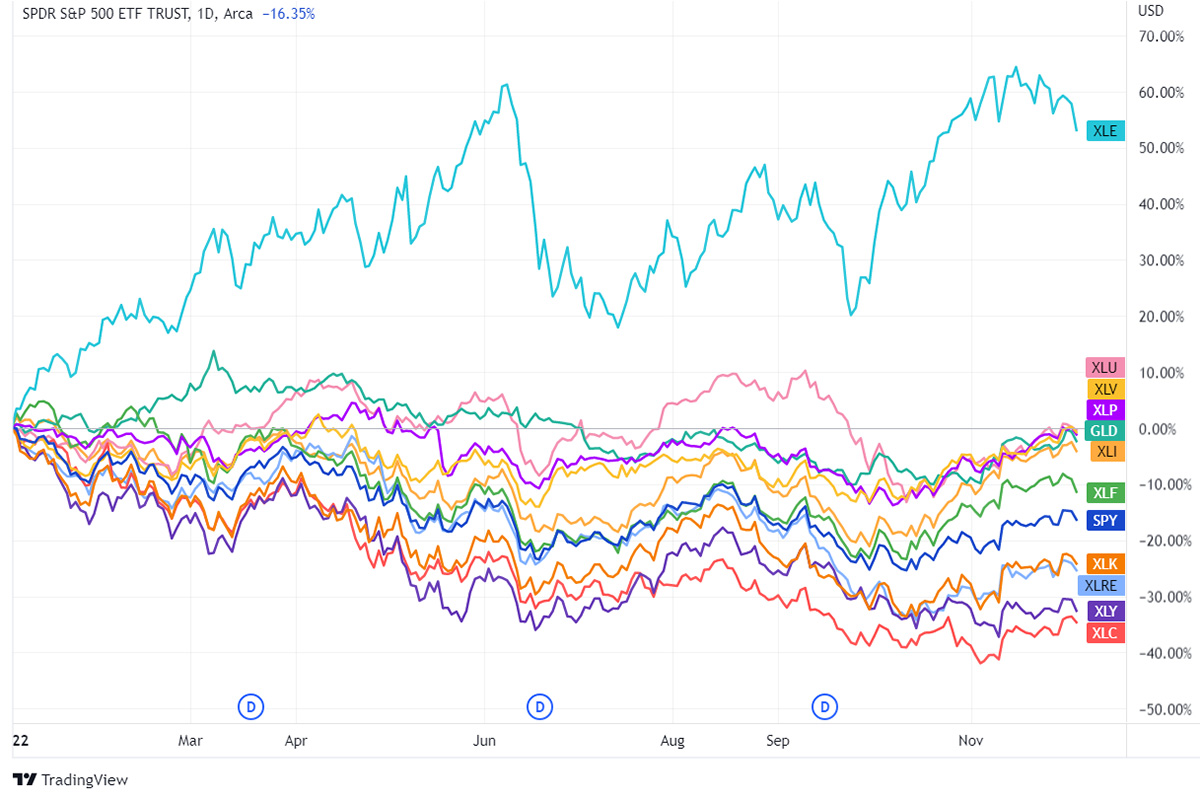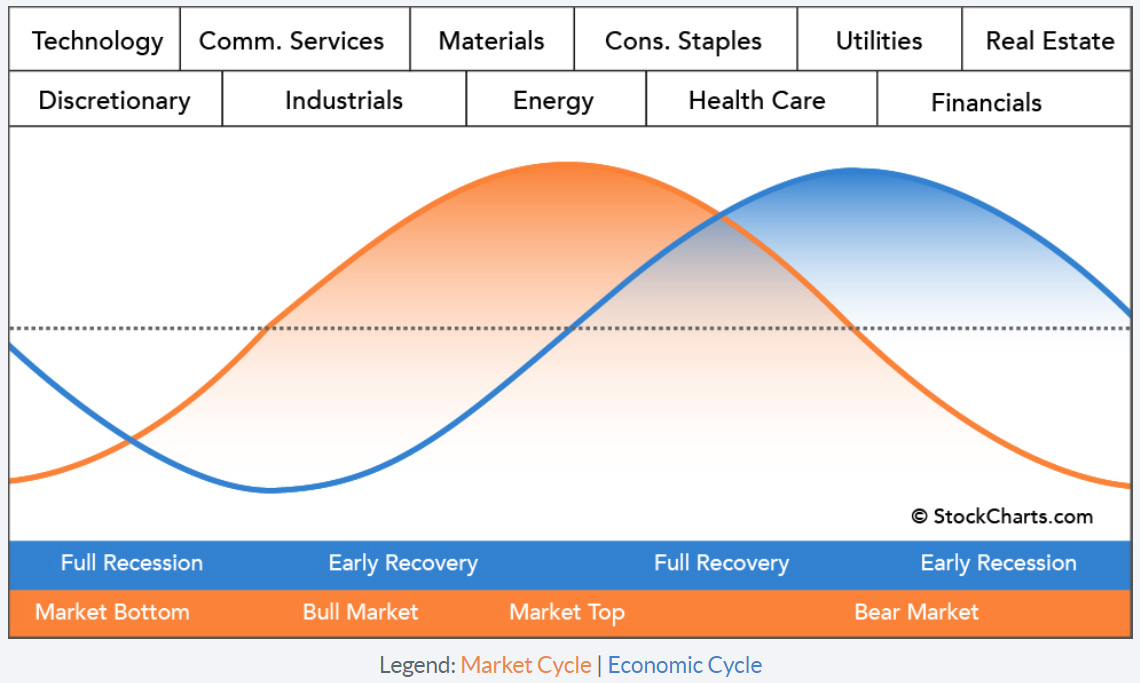
With a looming recession, many are more conservative when it comes to investing their money in the financial market. However, the nature of the financial market is that - there is always a sector that is performing better than the rest, even in a bear market.
In this article, we are going to look at ETFs that represent the sector performance.
In 2022, for example (chart below) safe haven assets and defensive stock sectors like Utilities (represented by the symbol: XLU), Healthcare (XLV), Consumer staples (XLP) and Gold (GLD) have been performing relatively better compared to the overall US market (SPY).
And, the Energy sector (XLE) has rallied over 50% YTD because of the war.
So, which sector can we focus on in the coming year given a looming recession?
To answer that question, let’s visit the Sam Stovall’s Sector Rotation model
This model suggests the expected outperformance of certain sectors as we flow through the various phases of economic cycles. The idea is that the stock market follows this pattern as well - not forgetting that the stock market reacts 6 - 9 months earlier than the economy, hence seeing a bear market (orange chart) in an Early Recession - which is where we are currently at.
Of course, it doesn't always follow the pattern, as there are way too many variables in play. The last few years are great examples of that - where we had a pandemic and a war. Hence some of the sectors like Energy, Healthcare and Consumer Staples are still outperforming the overall market at the moment, despite being in Early Recession
The market in 2023 will remain challenging
Due to the risk of recession next year, the more resilient ETFs would still be Healthcare (XLV), Consumer staples (XLP) and Utilities (XLU).
However, if the central bank slows down interest rate hike after reaching about 5.0% to 5.5%, then Technology and high growth stocks are likely to recover. At that time, Nasdaq (QQQ), Technology (XLK) or Semiconductor (SMH) are some of the ETFs that may outperform based on the sector rotation model.
The central bank action is highly dependent on the inflation trend, so it is important to monitor the inflation changes as a precursor to sector rotation.
While an experienced trader or investor will still be able to find opportunities within a specific sector, a casual investor or trader who does not want to spend too much time in monitoring the individual performance of a stock, commodity or currency - can still capitalize on the better performing sector with ETFs.
Certainly, one will need to spend some time to learn and decide on which ones to invest in, as there are thousands of combinations of ETFs out there in the US market to choose from apart from the major ones mentioned above.
Learn how you can get started in investing in ETFs with Beyond Insights’ Investing with ETF Made Simple course >> https://beyondinsights.info/etfs


